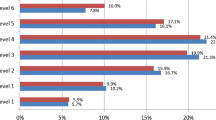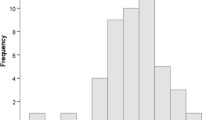Abstract
This paper highlights the gender factor in the Trends in Mathematics and Science Study in 2003 (TIMSS-2003) of eight participating countries from the Asia-Pacific region: Chinese Taipei, Hong Kong-SAR, Indonesia, Japan, Republic of Korea, Malaysia, Singapore, and the Philippines (Chinese Taipei and Hong Kong-SAR will be referred to as countries in this paper.) in mathematics. The focus is on gender-related data encompassing the overall performance of students from the participating countries and their performance in the content and cognitive domains. At grade 8 level, the gender difference in the overall performance of students mirrored the international average and favored girls in all countries of the Asia-Pacific region (except in Japan and the Republic of Korea). The regional data also showed that, in general, the Philippines and Singapore can be considered to be at one extreme with gender differences favoring girls in both content and cognitive domains, and the Republic of Korea and to some extent Japan are at the other extreme with the gender differences favoring boys. At grade 4 level, girls from the Philippines and Singapore also performed better than the boys whereas the boys from Japan and Chinese Taipei did slightly better than the girls.
Similar content being viewed by others
Notes
Thailand did not meet some sampling requirements and is excluded. The affluent English-speaking countries, Australia and New Zealand are also excluded, given their more ‘westernized’ contexts.
The HDI—human development index—is a summary composite index that measures a country's average achievements in three basic aspects of human development: health, knowledge, and a decent standard of living.
The GDI is a composite indicator that measures the average achievement of a population in the same dimensions as the HDI while adjusting for gender inequalities in the level of achievement in the three basic aspects of human development.
References
American Institutes for Research. (2005a). What the United States can learn from Singapore’s world-class mathematics system (and what Singapore can learn from the United States): An exploratory study. Washington, DC: AIR.
American Institutes for Research. (2005b). Reassessing U.S. international mathematics performance: new findings from the 2003 TIMSS and PISA. Washington, DC: AIR.
Adams, D. (2002). Education and national development: priorities, policies, and planning. Hong Kong: Asian Development Bank.
Baker, D. P., & Jones, D. P. (1993). Creating gender equality: cross-national gender stratification and mathematical performance. Sociology of Education 66(2), 91–103.
Behling, J., Courtis, C., & Foster, S. (1982). Impact of sex role combinations on student performance in field instruction. Journal of Educational Psychology 90(3), 616–527.
Biggs, J. B. (1994). What are effective schools? Lessons from East and West. The Australian Educational Researcher 21, 19–40.
Biggs, J. B. (1998). Learning from the Confucian heritage: So size doesn’t matter? International Journal of Educational Research 29, 723–738.
Bray, M. (2003). Adverse effects of private supplementary tutoring. Paris: UNESCO-IIEP.
Burton, L. (2001). Fables: the tortoise? The hare? The mathematically underachieving male? In B. Atweh, H. Forgasz & B. Nebres (Eds.), Sociocultural research on mathematics education–An international perspective (pp. 379–392). Mahwah, NJ: Lawrence Erlbaum Associates.
Chapman, D. (2002). Management and efficiency in education: Goals and strategies. Hong Kong: Asian Development Bank.
Chapman, D., & Adams, D. (2002). The quality of education: Dimensions and strategies. Hong Kong: Asian Development Bank.
DeMars, C. E. (1998). Gender differences in mathematics and science on a high school proficiency exam: the role of response format. Applied Measurement in Education 11(3), 279–299.
Dupriez, O. (2003). Adapting education to the global economy. Philippines: Asian Development Bank.
Fan, X., Chen, M., & Matsumoto, A. R. (1997). Gender differences in mathematics achievement: findings from the National Education Longitudinal Study of 1988. Journal of Experimental Education 65, 229–242.
Feingold, A. (1988). Cognitive gender differences are disappearing. American Psychologist 43, 95–103.
Fennema, E., & Carpenter, T. A. (1998). New perspectives on gender differences in mathematics: an introduction. Educational Researcher 27(5), 4–21.
Fennema, E., & Peterson, P. (1985). Autonomous learning behavior: A possible explanation of gender-related differences in mathematics. In L. C. Wilkinson & C. B. Marrett (Eds.), Gender influences in classroom interactions (pp. 17–35). New York: Academic Press.
Fennema, E., & Tartre, L. A. (1985). The use of spatial visualization in mathematics by girls and boys. Journal for Research in Mathematics Education 16(3), 184–206.
Fierros, E. G. (1999). Examining gender differences in mathematics achievement on the Third International Mathematics and Science Study (TIMSS).In Annual meeting of the American Educational Research Association (ERIC Document No. 431602).
Forgasz, H., & Leder, G. (2001). “A + for girls, B for boys”: Changing perspectives on gender equity and mathematics. In B. Atweh, H. Forgasz & B. Nebres (Eds.), Sociocultural research on mathematics education—an international perspective (pp. 347–366). Mahwah, NJ: Lawrence Erlbaum Associates.
Friedman, L. (1989). Mathematics and the gender gap: a meta-analysis of recent studies of sex differences in mathematical tasks. Review of Educational Research 59, 185–213.
Geary, D. C. (1996). Sexual selection and sex differences in mathematical abilities. Behavioral and Brain Sciences 19(2), 229–284.
Hanna, G. (1994). Should girls and boys be taught differently? In R. Biehler, R. W. Scholz, R. Sträßer & B. Winkelmann (Eds.), Didactics of mathematics as a scientific discipline (pp. 303–314). Dordrecht: Kluwer.
Hyde, J. S., Fennema, E., & Lamon, S. J. (1990). Gender differences in mathematics performance. Psychological Bulletin 107, 139–155.
Jung, K., & Chung, H. (n.d.). The study of middle school students’ gender difference in mathematics and its resolution. Women’s Studies Forum: Korean Women’s Development Institute. Available at: http://www.kwdi.re.kr/data/05forum-3.pdf (Accessed Dec 2007).
Kaur, B. (1990). Girls and mathematics in Singapore: the case of O-level mathematics. In L. Burton (Ed.), Gender and mathematics: an international perspective (pp. 98–112). London: Cassell.
Keeves, J. P., & Slade, M. (2003). Sex and gender differences in educational outcomes. In J. P. Keeves & R. Watanabe (Eds.), International handbook of educational research in the Asia-Pacific region (pp. 257–268). London: Kluwer.
Kimball, M. M. (1989). A new perspective on women’s math achievement. Psychological Bulletin 105, 198–214.
Klein, J. (2004). Who is most responsible for gender differences in scholastic achievements: pupils or teachers? Educational Research 46(2), 183–193.
Leder, G. (1992). Mathematics and gender: changing perspectives. In D. A. Grouws (Ed.), Handbook of research on mathematics teaching and learning (pp. 597–622). New York: Macmillan.
Leder, G. C., Forgasz, H. J., & Solar, C. (1996). Research and intervention programs in mathematics education: a gendered issue. In A. J. Bishop, K. Clements, C. Keitel, J. Kilpatrick & C. Laborde (Eds.), International handbook of mathematics education (pp. 945–986). Dordrecht: Kluwer.
Lee, W. O. (2002). Equity and access to education: themes, tensions, and policies. Hong Kong: Asian Development Bank.
Leung, F. K. S. (2002). Behind the high achievement of East Asian students. Educational Research and Evaluation 8(1), 87–108.
Leung, F. K. S. (2005a). Some characteristics of East Asian mathematics classrooms based on data from the TIMSS 1999 video study. Educational Studies in Mathematics 60, 199–215.
Leung, F. K. S. (2005b). Implications of TIMSS for mathematics curriculum reform in Asia. In The 1st international conference on Asian Comparative Education, Taipei, November 9–12, 2005.
Ma, X. (1995). Gender differences in mathematics achievement between Canadian and Asian education systems. The Journal of Educational Research 89(2), 118–127.
Ministry of Education Singapore. (2005). Trends in International Mathematics and Science Study (TIMSS) 2003: National Report for Singapore.
Mullis, I. V. S., Martin, M. O., Gonzalez, E. J., Gregory, K. D., Garden, R. A., O’Connor, K. M., et al. (2000a). TIMSS 1999: International mathematics report. Boston: IEA.
Mullis, I. V. S., Martin, M. O., Fierros, E. G., Goldberg, A. L., & Stemler, S. E. (2000b). Gender differences in achievement: IEA’s 3rd international Mathematics and Science Study (TIMSS). Boston: International Study Center.
Mullis, I. V. S., Martin, M. O., Gonzalez, E. J., & Chrostowski, S. J. (2004). TIMSS 2003 international mathematics report. Boston: International Study Center.
National Council of Teachers of Mathematics. (1998). Principles and standards for school mathematics: discussion draft. Reston: Author.
National Science Foundation. (2001). Middle school mathematics comparisons for Singapore mathematics, connected mathematics program, and mathematics in context: a summary
Ogura, Y. (2006). Background to Japanese students’ achievement in science and mathematics. In S. J. Howie & T. Plomp (Eds.), Contexts of learning mathematics and science (pp. 313–334). London: Routledge.
Park, K., & Leung, F. K. S. (2006). Mathematics lessons in Korea: Teaching with systematic variation. In D. Clarke, C. Keitel & Y. Shimizu (Eds.), Mathematics classrooms in twelve countries: The insider’s perspective (pp. 247–262). Rotterdam: Sense Publishers.
Park, C., & Park, D. (2006). Factors affecting Korean students’ achievement in TIMSS 1999. In S. J. Howie & T. Plomp (Eds.), Contexts of learning mathematics and science (pp. 177–194). London: Routledge.
Soh, K. C., & Quek, K. S. (2001). Gender differences in TIMSS mathematics achievement of four Asian nations: a secondary analysis. Studies in Educational Evaluation 27, 331–340.
Stigler, J. W., & Hiebert, J. (1999). The teaching gap. New York: Free Press.
Swetz, F. J. (1989). Cross-cultural insights into the question of male superiority in mathematics: some Malaysian findings. In C. Keitel, P. Damerow, A. Bishop & P. Gerdes (Eds.), Mathematics, education, and society. Science and Technology Education, Document Series No. 35. Paris: UNESCO.
Talisayon, V. M., Balbin, C. R., & De Guzman, F. S. (2006). Predictors of student achivement in TIMSS 1999 and Philippinne Results. In S. J. Howie & T. Plomp (Eds.), Contexts of learning mathematics and science (pp. 225–244). London: Routledge.
United Nations Development Project (UNDP). (2003). Human Development Report.
Wolf, R. M. (2002). Extra-school instruction in mathematics and science. In D. F. Robitaille & A. E. Beaton (Eds.), Secondary analysis of the TIMSS data (pp. 331–341). Netherlands: Kluwer.
Yung, B. H. W., Wong, S. L., Cheng, M. W., & Lau, A. K. Y. (2005). Exploring issues on gender differences in science achievement: A case study of Hong Kong. In The first international conference on Asian Comparative Education, Taipei, November 9–12, 2005.
Acknowledgments
The author acknowledges the help of Dr Boey Kok Leong for retrieving some of the data used in this paper.
Author information
Authors and Affiliations
Corresponding author
Rights and permissions
About this article
Cite this article
Dindyal, J. An overview of the gender factor in mathematics in TIMSS-2003 for the Asia-Pacific region. ZDM Mathematics Education 40, 993–1005 (2008). https://doi.org/10.1007/s11858-008-0111-2
Accepted:
Published:
Issue Date:
DOI: https://doi.org/10.1007/s11858-008-0111-2




